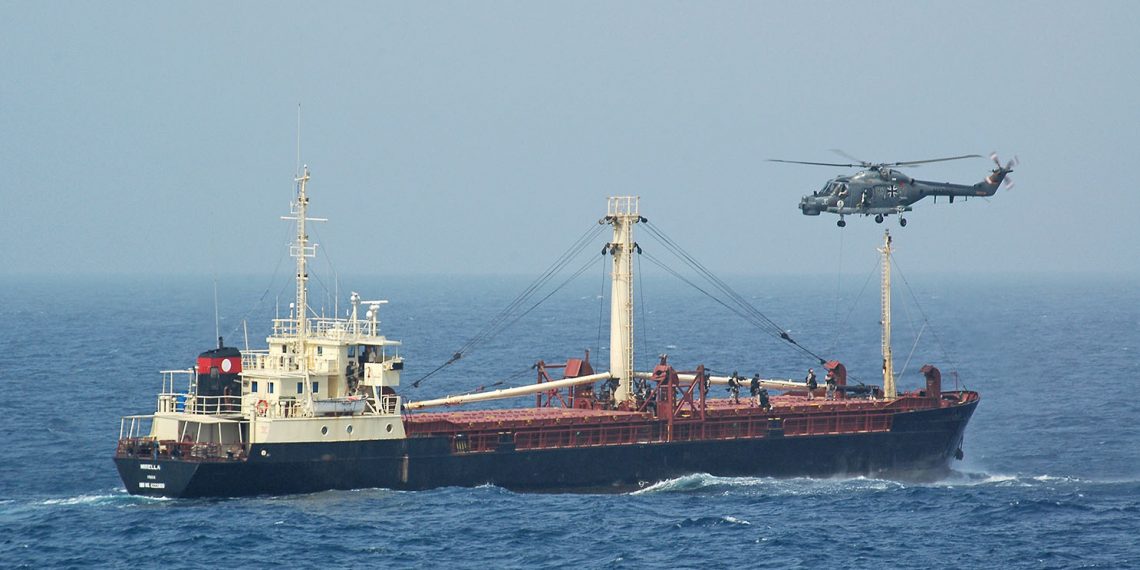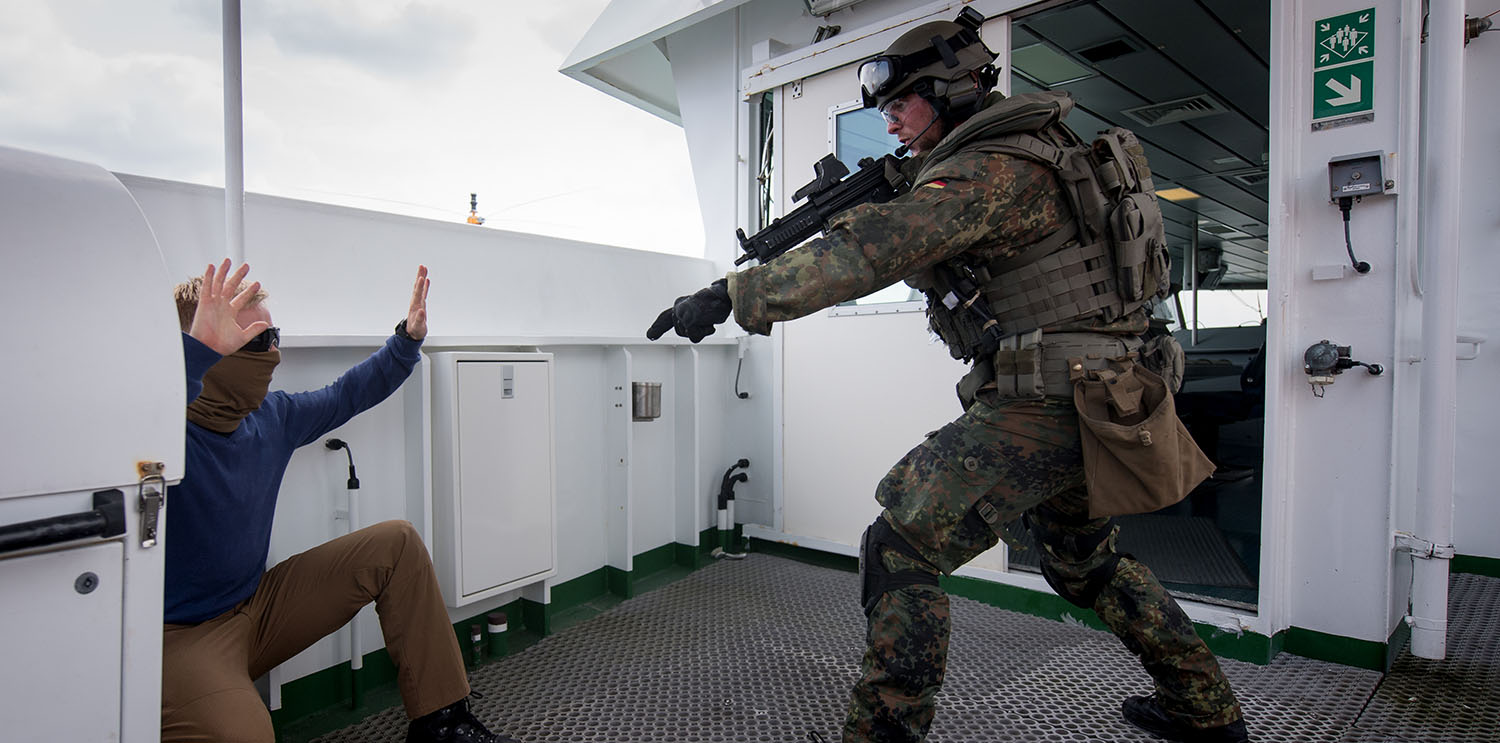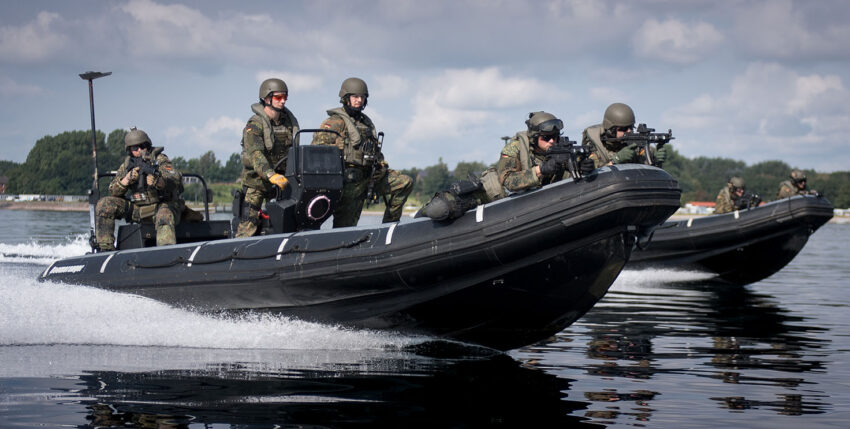If political decisions are to be enforced against the will of third parties, there are a number of options available. Operation Irini centres on boarding in various forms.
Maritime Interdiction Operations serve to enforce political will. One example of this is the current military operation Irini (Eunavfor Med Irini) of the European Union (EU), whose predecessor was Operation Sophia. The core task of Irini (Greek for peace) is to implement the United Nations arms embargo against Libya in accordance with UN Resolution 2292 from 2016. The operation also aims to gather information on illegal oil exports and prevent people smuggling. Libya is also to be supported in building up a navy.
Such Operations are tailored to a specific sea area. In the case of Irini, it covers the sea between Italy, Libya and Malta - with an area of over 360,000 square kilometres. All vessels there are detected by maritime reconnaissance vessels or naval ships, questioned via maritime radio and sent to the Irini Operations Centre reported in Rome.
Depending on the suspicions regarding the respective civilian ship and its willingness to co-operate, the commander in Rome may decide to use different Application options commands. In addition to requesting further information via radio ("hailing") and the friendly approach this is the stopping, searching and checking of the ship, its crew and cargo, using military force if necessary. There are different levels here: unopposed, non-cooperative and opposed boarding.
They differ in terms of the degree of military force used. The framework of action for the soldiers in the realisation of their Boarding order form the Rules of Engagement (ROEs) - a summary and specification of the applicable deployment law that is specified by the policy. The transfer of the Boarding teams Depending on the location and sea conditions, this is done with speedboats or helicopters.

Application options
Under hailing is understood to mean initial contact with a ship via VHF marine radio. General and technical data is requested - about the crew, the cargo and the voyage - in order to pass it on to the Irini commander for assessment. If the data is classified as unremarkable, the ship can be recognised as a cleared vessel continue its journey. Incidentally, the principle of proportionality applies to all deployment levels, which means, among other things, avoiding delays in commercial traffic as far as possible.
Approaching a ship with the consent of the respective master (captain) is considered a friendly approach designated. The purpose is to gather information and reconnaissance and to inform the ship's command of the objective of the operation.
If there is any suspicion of an offence, the operational staff in Rome will order a boarding. A unopposed boarding in international waters requires the approval of the respective flag state. Further conditions for this classification: The master follows the instructions of the on-scene commander (OSC) and the additional requirements are met:
- No obvious passive or active resistance is offered by the crew.
- There is no evidence of a threat.
Uncooperative boarding means that there is no knowledge of a threat, but at least one of the following conditions is met:
- The Master does not return the radio call, does not disclose the reason for being in the sea area or continually refuses to board.
- Passive resistance is offered by the crew with the aim of delaying, obstructing, impeding or preventing boarding of the suspect vehicle. However, these measures can be overcome by mechanical means.
- Passive resistance is offered with the sole aim of delaying, obstructing, impeding or preventing a search and seizure of the suspect vehicle. However, these measures can also be overcome by mechanical means.
Under opposed boarding is to be understood as boarding under threat. At least one of the following conditions applies:
- The master of the ship actively refuses permission to carry out the boarding.
- Passive or active resistance measures by the crew are clearly aimed at causing damage to the on-board intervention team or creating a very dangerous environment.
- There is evidence of a possible threat on board the target vehicle or there is a suspicion that the vehicle is transporting terrorist contraband.
A maximum of tactical action is therefore required on board the ship, whereby the safety of the team is just as important as the simultaneous preservation of evidence.

Measures after boarding
Does the result of the Boardings If an offence is suspected, the vehicle in question can be diverted to the port of an EU member state, for example, in order to carry out further inspections of the ship and cargo. Samples of liquid cargo such as paraffin, for example, can be taken at sea and then taken ashore for further examination if necessary. Depending on the findings, measures up to and including seizure of the ship and arrest of the crew are possible. Boarding is not the measure of all things. This means that the commander can also fulfil his without boarding, for example by diverting it to a harbour. He is the one who ultimately leads the operation on site.

Composition of an on-board deployment team
An on-board deployment team consists of two squads of five soldiers each. Each team member has a specific function.
Position 1: Risk analyst - checks rooms for accessibility and sources of danger
Position 2: Access technician - mechanical, ballistic, explosive opening procedures
Position 3: Documentator - preservation of evidence
Position 4: Team leader - petty officer, tactical leader of an on-board operations team
Position 5: Combat First Responder (emergency paramedic)
Boarding training includes special close combat training and advanced marksmanship training.
Captain Jürgen R. Draxler is a journalist and publicist.
Photos: German Armed Forces/Daniel Auwermann, David Hecker











One Response
Nice article, you can tell you're a professional.
I'd love more of these great tips and information!
Thanks for the great contribution!